From inconspicuous cabinets to vertical blinds, here are the unconventional choices that helped a family of four overcome spatial constraints.
Meiyi was pretty much the perfect client. As a second-time homeowner, she knew exactly what she wanted even before viewing the property for the first time. Yet, she remained receptive to surprises her designer, Kaylin, might introduce. And did we mention she’s a former interior designer herself?
“Her brief was quick and easy to nail down, and we only had to work through the technical aspects of the project. She is also open to experimentation rather than falling back on what she is comfortable and familiar with,” said Kaylin.
This is obvious once you enter the apartment, distinguished by a cartoon-esque quality with its matte subway tiles and warm hues. Consider this your first clue that two lively children, aged four and seven, live here.
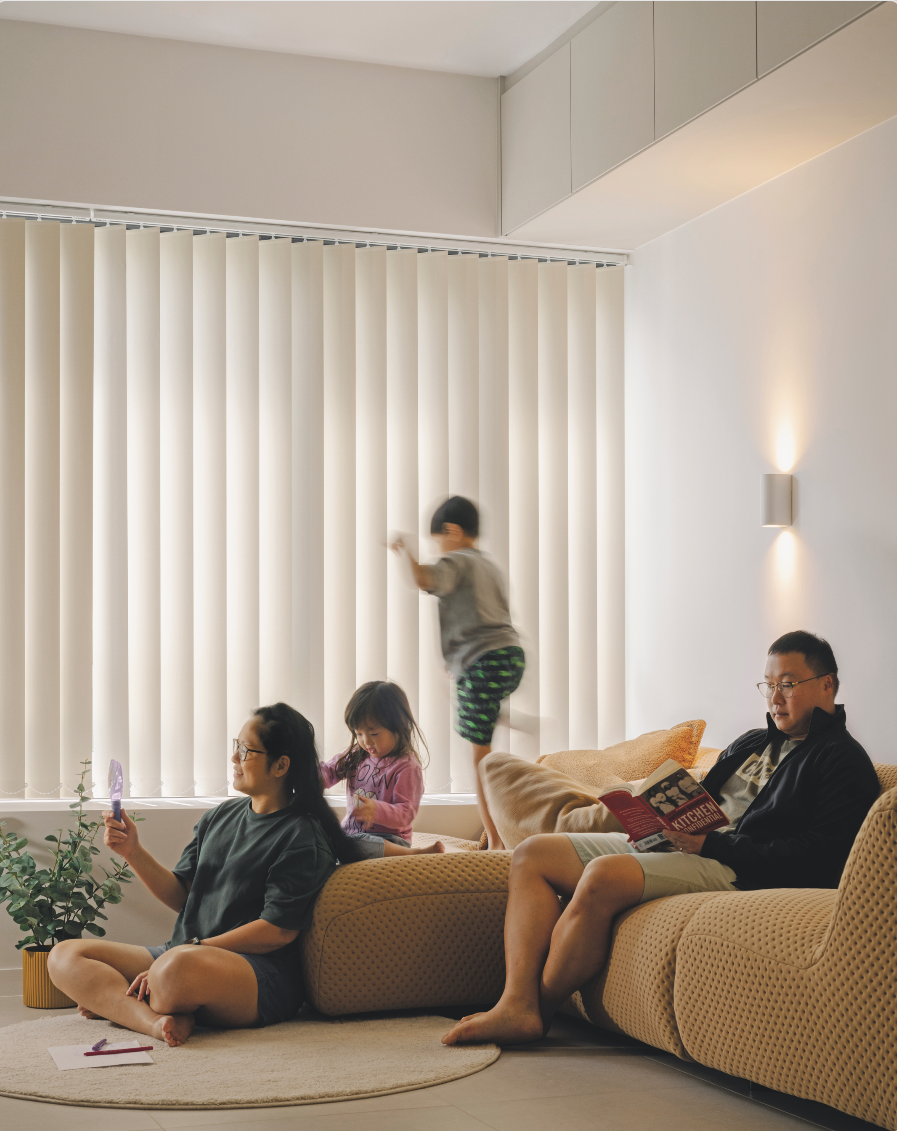
“Honestly, I held my breath about having so many colours in the same space. This was indeed an experiment, so I’m very relieved that it turned out okay,” said Meiyi.
To maintain harmony, Meiyi strategically placed colours throughout the apartment. She juxtaposed feature walls with neutral areas to ensure smooth transitions between spaces.
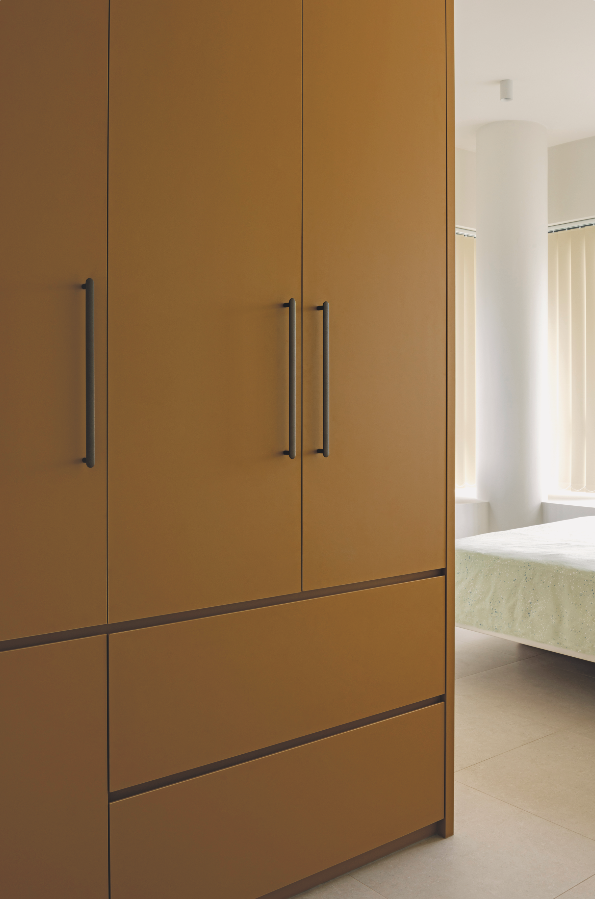
Small space, big impact
But there was another challenge: storage. Creating a family home for two energetic kiddos and their inevitable mess is a tall order, especially since the small apartment lacked a storeroom. Plus, Meiyi wasn’t a big fan of built-in furniture.
The solution? Suspending storage cabinets above eye level to maximise floor space. To blend them seamlessly, they used a laminate matching the wall paint and aligned their height with structural beams.
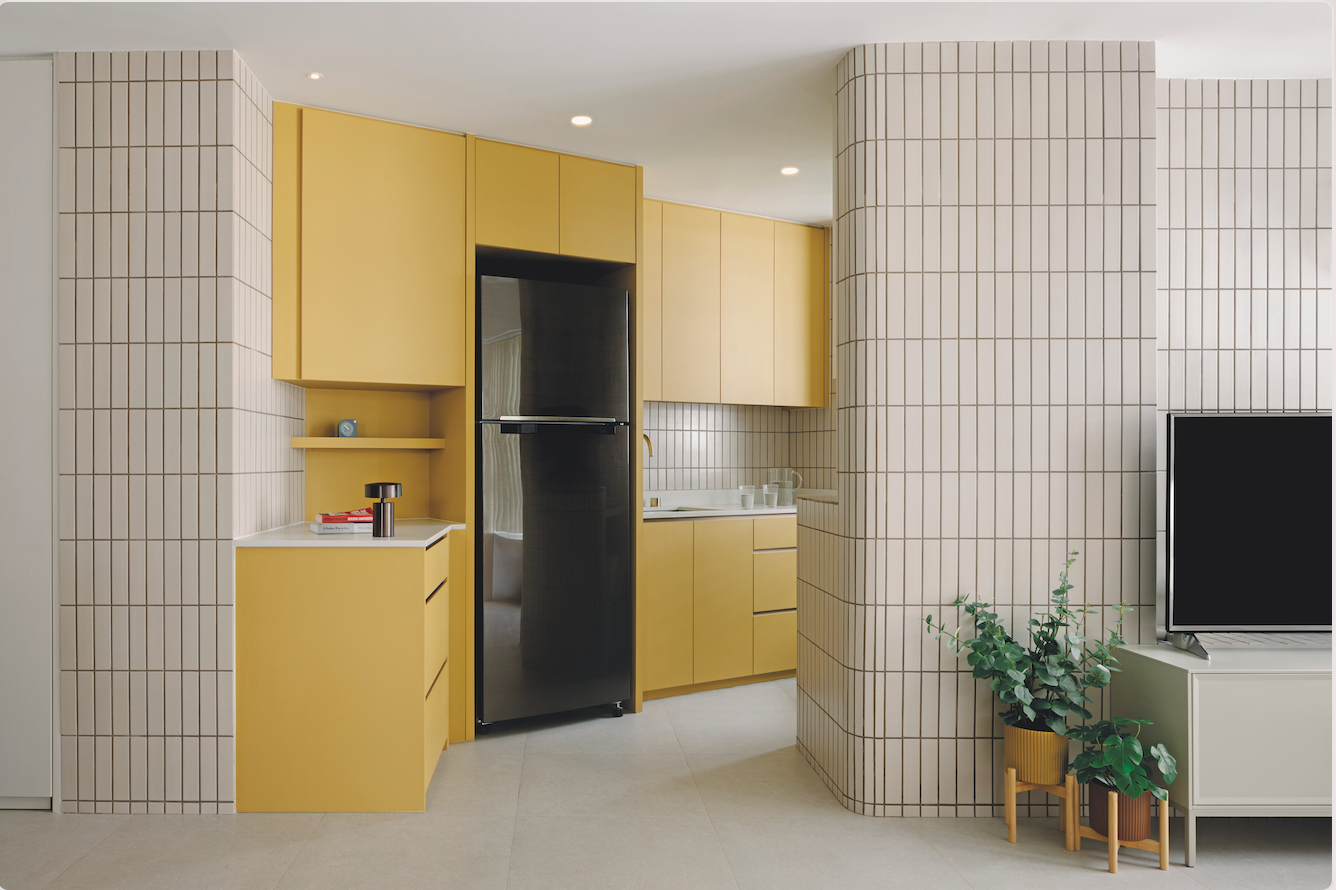
“The design and position proved to be effective. We had to point the cabinets out to our guests when they asked where we hid our stuff,” Meiyi quipped.
Where most homeowners would’ve gone with venetian blinds, they picked vertical ones partly to create an illusion of height. More importantly, it seemed like a practical choice in the densely packed development.
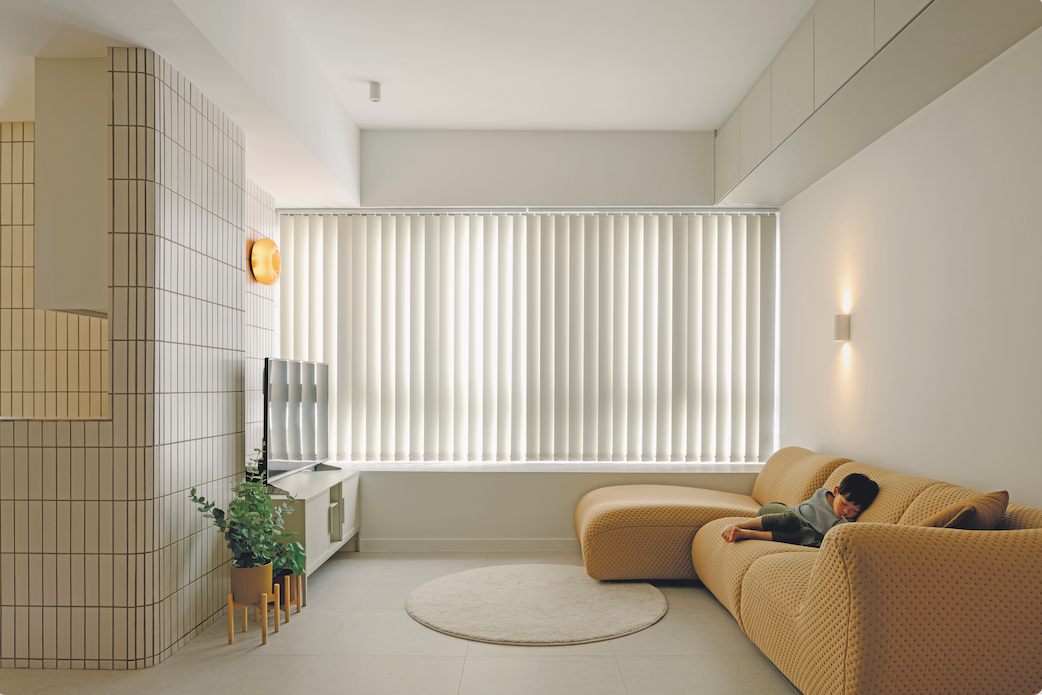
“Because of the unique architecture of The Interlace, some windows face those of adjacent blocks. Vertical blinds allow us to maintain privacy and sightlines simultaneously,” shared Meiyi.
Consequently, they’ve placed the sofa right by the wall, allowing them to enjoy the views while keeping an eye on the little ones. This layout created an open-concept living and dining room, which Meiyi painstakingly crafted.
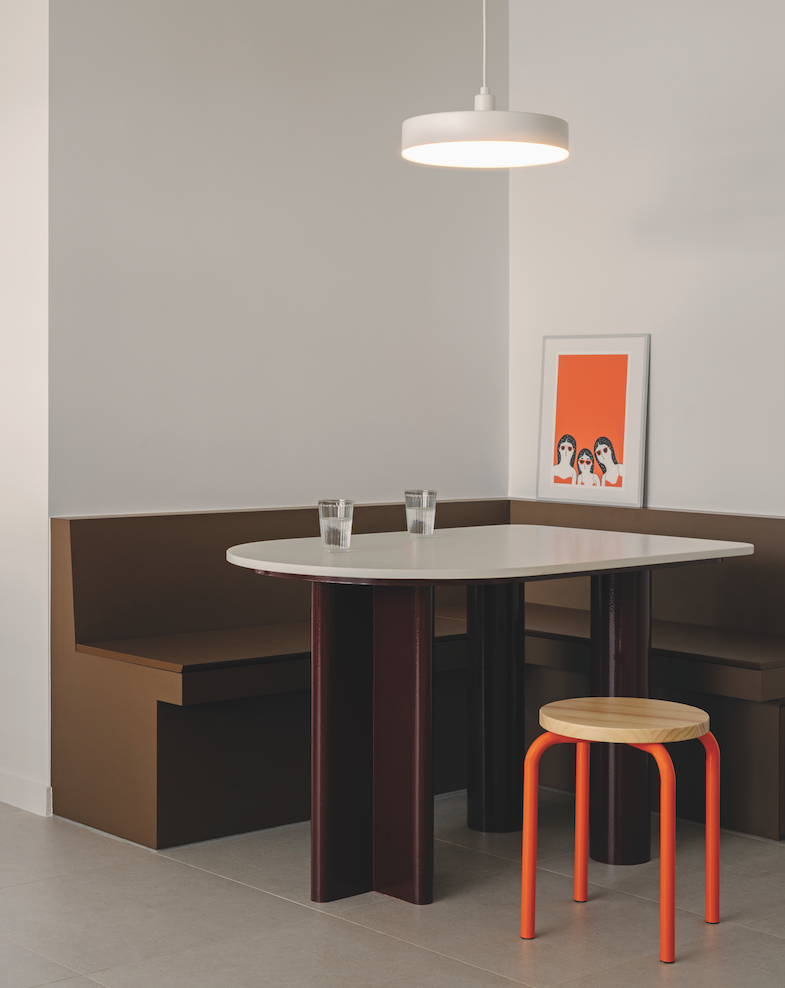
“I wanted the ergonomics to fit us to a tee and the proportions to be cute. So, whenever I visited cafes, I’d whip out my measuring tape to note the dimensions I felt comfortable with,” Meiyi shared.

The setup was optimised to say the least. The backrest allowed guests to lean back and still rest their elbows on the table. The bench, fitted with power plugs and a storage compartment, was deep enough for lounging. The rounded table end allowed seating for guests.
“I’ve managed to seat six adults and two kids around this small table. It’s proof that good design can make spaces work hard for you,” Meiyi added.
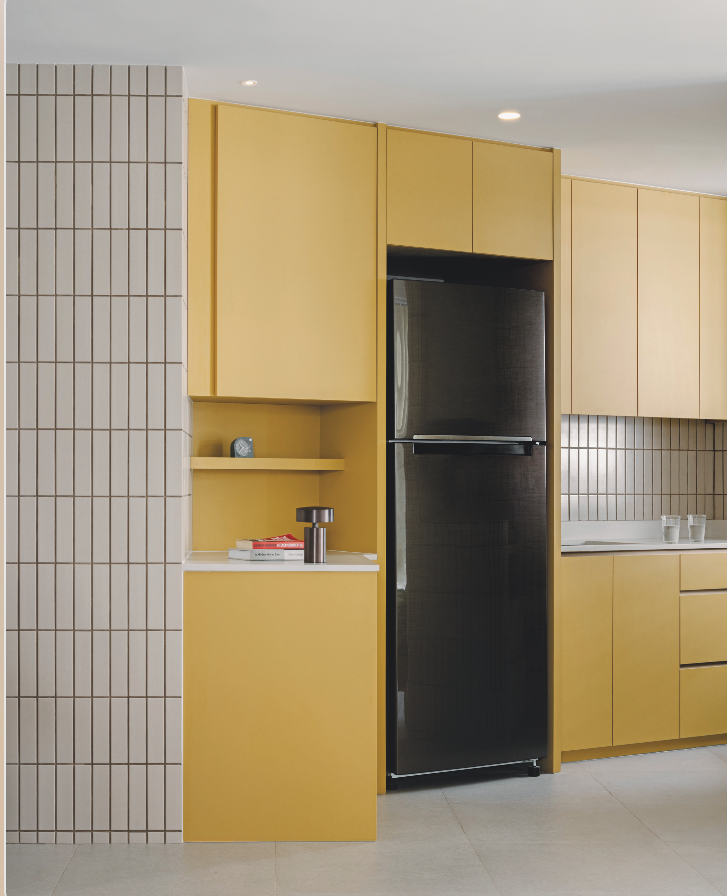
Elevating everyday moments
White tiles in the kitchen might raise eyebrows, but Meiyi and her family embraced them as they rarely cook. There isn’t even a countertop stove, as they envisioned the kitchen more as a pantry.
“I stuffed as many drawers as I could because they worked better for us compared to shelves. There’s also a wall and floor cabinet hidden behind the wall where the TV is. That’s where we put the not so pretty but real sights of a kitchen,” Meiyi revealed.
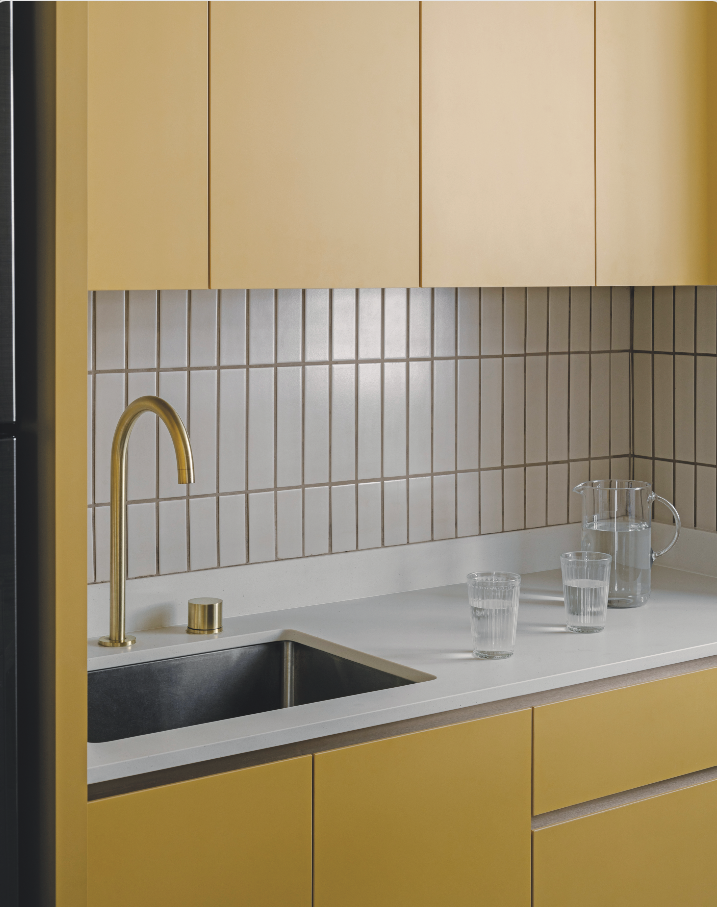
Following Kaylin’s suggestion, they invested in fixtures from Australian tapware brand Abi, elevating the look of the kitchen sink and making daily routines enjoyable for the children.
The latter also had a say in their bedroom, featuring a bunk bed with a pull-out sleeper to accommodate family members who are feeling under the weather – a practical solution they lacked in their previous apartment.
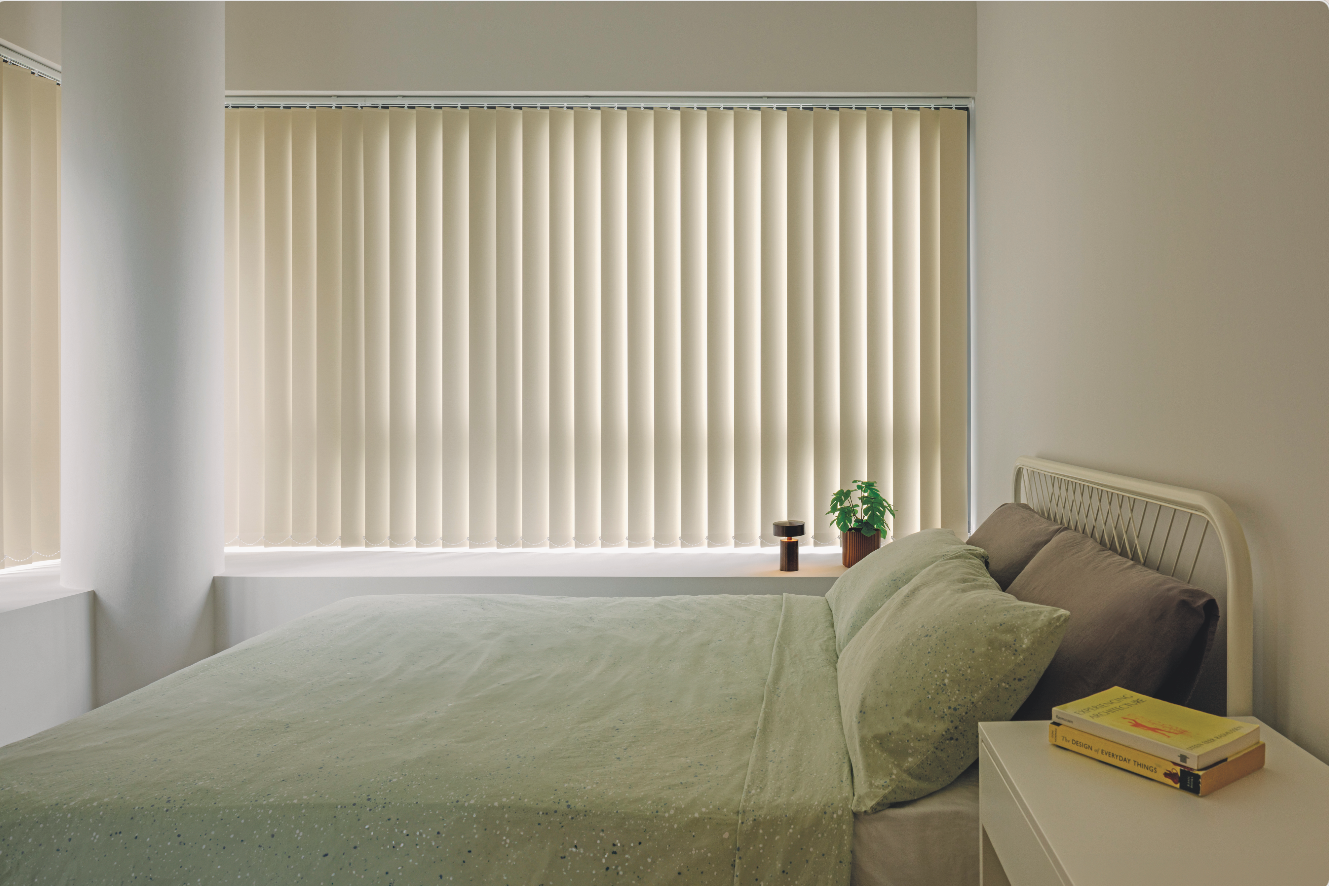
Their thoughtful approach extended to the master bedroom, where a section of the vertical blinds is permanently closed to enhance privacy. Meanwhile, the adjoining bathroom, which came with bay windows, was the true test of their ingenuity.
“I was determined to make every square inch work harder, and we managed to achieve this with Kaylin’s help and technical knowledge,” said Meiyi.
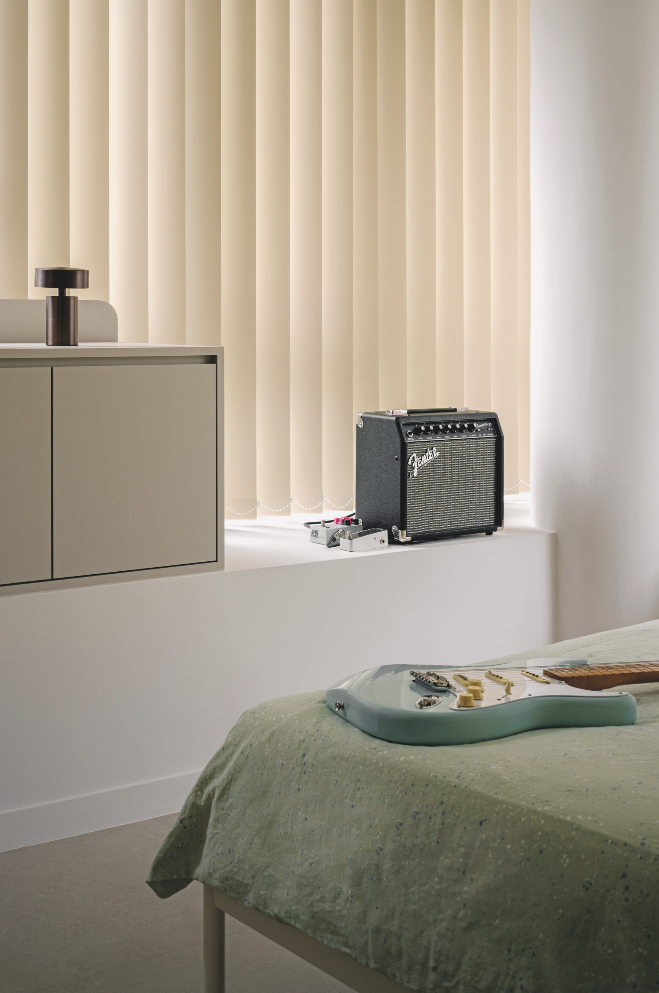
The previously underutilised space above the bay window was converted into a vanity, freeing up much-needed square feet for a larger shower stall. No wonder Meiyi names the master bathroom their proudest work of the entire project – tied for first place with the dining area.
“I really enjoyed brainstorming with Kaylin for areas I wasn’t sure about, and she helped make the hard decisions easy,” she said.

It seems two heads are indeed better than one – especially when they’re both interior design enthusiasts.



